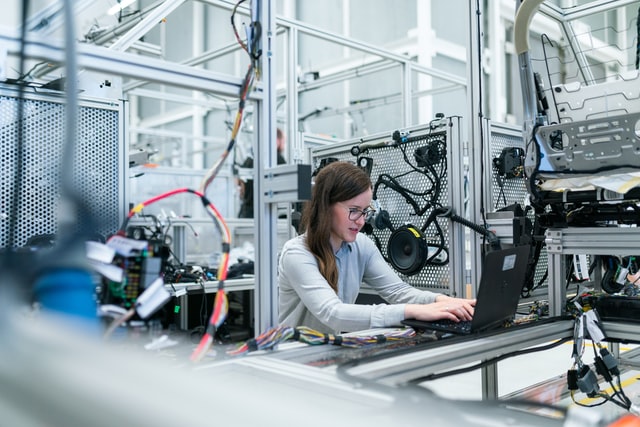Most companies have some form of research and development (R&D) mechanism in place. These may be ongoing formal programs, or project-based initiatives depending on need. And almost all of them will agree that while R&D is expensive, it’s necessary for identifying new business directions, and for keeping current customers coming back for more.
Many even believe that R&D is a business innovation in its own right. But while it can stand alone, or if interwoven with other areas, R&D is best considered a critical element of a larger process. Business innovation is greater than just the R&D efforts of any enterprise and it must also include discovery, incubation and acceleration (DIA) stages and components.
Creating Value with IoT
Today, discovery, incubation, and acceleration can be pursued using Internet of Things (IoT) technology to analyze data in real-time as a way to optimize business innovation. According to research by Deloitte, IoT can create an information value loop that can work as a mechanism for uncovering and creating value within existing processes, as well as lead to new processes.
By linking manufacturing and assembly with IoT sensors, vast amounts of data can be analyzed rapidly with advanced analytics software. This analysis leads to new insights, as well as uncovering new paths forward. One example would be a manufacturing company whose IoT platform identifies trends and insights that allow the company to develop service-related value streams to complement their core product lines.
But this value loop, once in place, can also be used to leverage an enterprise’s R&D efforts as well. By tapping into the power of IoT, R&D may have found a perfect match for adding new value and revving up the scope of the value loop. This not only means faster and more efficient R&D programs, it also creates customer-centric finished goods and specialty products that are based directly on data uncovered by IoT technology.
Six Ways R&D and IoT are a Perfect Match
As companies add IoT to their operation, it becomes a great companion to existing R&D mechanisms. Ways in which R&D and IoT align to create greater value include:
- Faster ROI for R&D: Many companies using IoT have reported faster ROI on projects compared to traditional models. The ability to incorporate data that includes everything from supply chain logistics to production process improvements and to consumer feedback enables R&D professionals to focus on real-time process data at accuracy levels not previously possible. It also allows them to focus development on products that consumers want, taking the guesswork out of many projects.
- New Products: IoT also has the potential to deliver new tools for R&D. One example is the use of digital twins. By creating a 3D simulation of a new or improved product, advanced data analytics use real variables to predict wear, output, quality concerns and lifecycle. This allows engineers and technicians to improve the product before prototyping and reduces the number of prototype iterations and therefore cost and time to market. The ability to analyze more precise data and incorporate new process improvements to existing product lines centers on the core capabilities of IoT technology and helps inform and drive the R&D Process.
- New Services: Matching IoT and R&D to industrial output has been transformational to many industries. For many decades, manufacturing companies made products and offered little in the way of service. But with IoT, data can now be leveraged to create service offerings to complement core manufacturing products. This not only creates new value by opening new revenue streams. In an age of more sophisticated consumer knowledge, it also helps companies build and enhance their brand rep as they become known as much for their service offerings as their products.
- Embedded IoT: Many manufacturers of industrial OEM equipment are adding IoT technology as an embedded component of their machinery. But the same process is being done to many consumer goods when applicable. By embedding the technology in both the manufacturing equipment as well as products, IoT creates a vast and dynamic ecosystem that R&D professionals can tap into. This allows them to create agile, focused projects such as process improvement for existing product lines as well as helping to inform their decision-making on new iterations and new product lines.
- Sustainability: Many industries are looking to improve sustainability for their production processes. This is true of most industries but is especially critical for industries such as food, pharmaceuticals and other companies where shelf life, spoilage and waste are still major concerns. For example, it is estimated that in the food industry alone, 40% of all food is destined for the landfill. As a result, companies can use IoT to develop R&D initiatives aimed at finding and correcting the root cause within their production and business operations, leading to greater sustainability.
- Reduced Cost: Cost, of course, is always on the minds of any business. The ability to use real-time production data, consumer input, and lifecycle tracking creates opportunities for R&D teams to focus on what drives profits. And when combined with the power of advanced analytics, machine learning, and AI in an IoT platform, these automated digital tools create a more agile R&D effort. And the improvement of existing processes as well as the introduction of new ones optimized through IoT data can be traced back to R&D that uses IoT as part of their tool set.
All companies strive to maximize R&D efforts, and incorporating IoT technology is key to future success. This is especially true for small and medium-sized enterprises (SME) that often lag behind larger competitors in adopting new technology. For entrepreneurs in new startups, medium-sized businesses looking to improve their R&D strategy, and for any company seeking to use R&D to improve business innovation, the Henry Bernick Entrepreneurship Centre (HBEC) at Georgian College offers innovative programs and assistance designed to help companies and entrepreneurs succeed.










